市场资讯及洞察
%20(1).jpg)
本来今天想聊聊澳洲央行副行长最近公开谈到的有关澳洲有可能陷入经济低速增长的怪圈的问题,但是想想过去几篇文章都是说澳洲的,自己都觉得有点过于多了。但是很多内容不是我不想说,说国内经济情况,就怕你懂的,说欧美呢,估计大家也没啥兴趣看,说数字货币,也容易被黄标,导致我都不知道说什么好。那想来想去,最近看似比较大的事件就是美国国会关于预算用完,政府停摆的讨论的。
我们都知道,几乎每年来那么一次的停摆,今年又来了。这次停摆的时间再次打破历史记录,到上周末为止,已经超过38天了。没钱发工资、预算批不下来、议会还在吵。看着熟悉吧?因为这已经不是第一次了。过去10年,美国政府停摆过4次,每次都是在最后一刻“凑合”过关。从奥巴马到拜登,再到现在的老川,都一样。
有人说这就是美国政治的一部分,可在投资眼里,这更像是一种系统性疲态——就是那个世界最强信用体的裂缝,越来越多了。而且每次的解决方案都是很不要脸的继续提高债务上限,换句话说就是多印一点美元。
BUT, 就算再无赖,也得按照自己定的规矩来:
美国财政部的数字摆在那儿:
截至2025年10月底,美国的联邦总债务已经突破34.9万亿美元,还在以每秒钟大约4万美元的速度增加。光是2024财年,财政赤字就超过1.7万亿美元。而且更离谱的是,光“还利息”这一项,2025年预计就要花掉1.1万亿美元。什么意思?
就是美国政府借的钱,不是用来搞建设、科研或就业,而是越来越多地在还旧账的利息。这像不像信用卡欠多了,每月只够还最低额?加入一艘航母需要1000亿美元造价(不包括后期维护保养),那每年美国国债需要支付的利息就等于10艘航母的造价。
再看点细的。现在美国政府每收进1块钱税,大概要花掉1块三。财政支出和收入差了三成,完全靠举债撑着。以前大家信美国债是“无风险收益”,现在越来越多的投资机构开始犹豫了。这么每年收100花130,总不是个办法啊,这要是某一天出现点啥问题,是不是之前发美债的都有可能不算了?
那我们老百姓这么想,自然其他国家也会担忧。所以到2024年底,日本和中国这两大美国国债持有人,都在减持美债。日本在过去一年里减少了大概500亿美元持仓,中国更是创下了十年新低,只剩不到7700亿美元。
什么意思?全球主要买家在撤退。买这个美元纸币,太没有安全感了。买了也不是自己的,说查封就查封,说不能用就不能用。这算什么?当甲方还要这么受气。
讲真,这种对美元信用体系开始怀疑的局面在历史上是第一次。美国长期靠发债维持政府运转、靠美元霸权转嫁通胀。可现在,财政失衡、政治对抗、地缘风险……都在削弱那个“美元信仰”。
你想啊,美元强的底层逻辑是什么?是航母和F22,哦不对,说错,重来啊,美元的底层逻辑是什么?是信任。
大家相信美国政府永远能还钱、永远有能力印钱、永远不会倒。可现在连他们自己内部都吵得不可开交,国会关门、债务上限拉扯、甚至连总统都公开说“预算快撑不住”。美元的信任体系开始打折。
这时候你就得想:如果世界对美元信心动摇,那资金往哪跑?
答案其实很简单——黄金。(其实数字货币也起到了部分作用,但是因为过于分散,种类太多,导致资金无法集中)
别看黄金没利息、也不分红,但它有个谁都替代不了的特性:它不是谁欠谁的债。
你拿着美债,信的是美国政府的信用;你拿着黄金,信的是全人类几千年的共识。几千年前的埃及法老都爱这个,肯定没错。
最近几个月黄金的表现也印证了这点。
2024年年底,国际金价突破每盎司2400美元的新高,到了2025年10月,又一次冲上2500美元附近。你说这只是地缘政治?那只是表面。深层原因,是全球在寻找美元之外的安全锚。
咱看印度、土耳其、俄罗斯这些国家央行,去年都在疯狂买金。根据世界黄金协会的数据,2024年各国央行净增持黄金超1000吨,创下历史第二高。
这说明:连各国政府都不太敢再押宝美元。我的看法很简单:
黄金这波不是短线冲动,而是长期趋势在切换。
美元几十年的霸权红利,靠的是全球信任。可当信任开始松动,这个故事的主角可能要换了。除非美国再次把老二老三整服气了,之后各位小弟就会再次对大哥的地位不会质疑了。作为群众,咱们其实不希望看到这一天到来,不论结局谁赢,期间的不可控因素太多,一旦一个不小心,咱们就要见证咱们现代人类最后的辉煌了。
最后,我不建议大家一股脑地“梭哈黄金”,但起码你得让自己有点配置。就像以前老人说的——“仓里没点金,心里没底气。”
那具体咋搞?
你可以分几种方式:
1. 实物金:最笨但最踏实。买金币、金条,放保险箱。但是每次买卖差价几乎等于价格的10%,交易成本极高。
2. 纸黄金/ETF:操作灵活,适合不想拿实物的人。缺点是,手里没有那个沉甸甸的金子,总感觉只是个数字而已。
3. 黄金矿业股:风险高、弹性大,适合激进投资者。这个就看人品了,如果运气好,5倍10倍不是梦,当然,更大的机率是,没挖到,宝马变单车。
从长远来看,我个人倾向于使用自己资金10-30%购买ETF作为“稳健基础”。这不是投机,而是保险。你不指望它天天涨,但万一美元系统出事,它能救你一命。
再说一句现实点的。
现在美国债务增长速度远高于GDP增长。也就是说,他们靠印钱维持系统平衡。通胀虽然被压了一点,但核心通胀还在3%左右,远高于美联储2%的目标。
这意味着:美联储降息空间有限,财政却还要继续借钱。
那结果?
货币越来越多,信用越来越稀。
黄金,就是对冲这种“信用通胀”的最好工具。
有人问:“那美元真的会崩吗?”
麦哥的回答是:不会马上崩,但它会慢慢失去神圣光环。这不,11艘航母还是很厉害的。
历史上没有哪个超级货币能永远称王。英镑用了100多年从巅峰掉下来,美元可能也会经历同样过程。如果大家学过历史应该可以知道,黄金在1971年美元脱钩后,从每盎司35美元涨到现在的2500美元。它没变,是货币的实际价值在变。
所以,简单总结:
美国政府停摆也许能暂时拖过去,债务上限也许能再抬一点,但信任这种东西,一旦开始透支,就很难补回来。你不能指望一个连工资都快发不出的政府,永远当世界的“信用中心”。美元可能还会强一阵子,但我认为黄金这波超级大牛市,才刚刚开始。
各位读者,我不是劝你买金发财,而是提醒你:这个世界的信用体系,正在慢慢换轨。
写完以后,赶紧用上网乘着黑五买一堆没用的垃圾。虽然咱们知道黄金美丽,价格长虹,但是咱日常生活,还是纸币方便啊。
生活还得过,但是咱们脑子不能糊涂。对吧?
免责声明:GO Markets 分析师或外部发言人提供的信息基于其独立分析或个人经验。所表达的观点或交易风格仅代表其个人;并不代表 GO Markets 的观点或立场。
联系方式:
墨尔本 03 8658 0603
悉尼 02 9188 0418
中国地区(中文) 400 120 8537中国地区(英文) +248 4 671 903
作者:
Mike Huang | GO Markets 销售总监
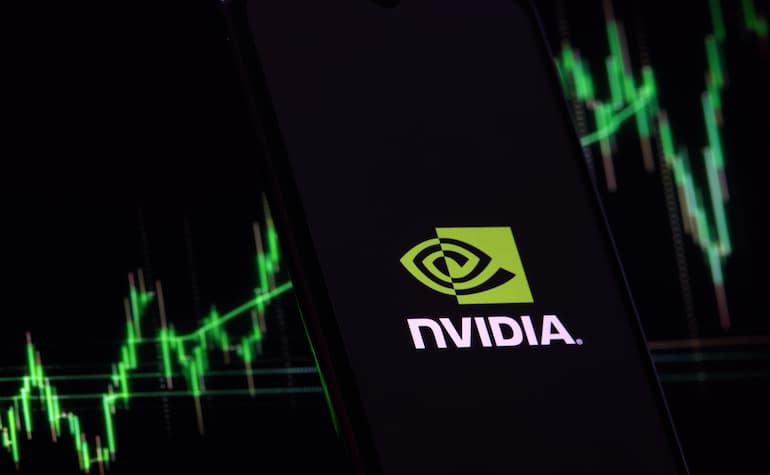

Nvidia has been the star of the US markets since the AI hype kicked off late 2022. The trillion-dollar chip manufacturer’s shares have almost tripled in 2023 alone, with the price increasing every month so far this year. In May, Nvidia surprised the markets by posting earnings and revenue figures well above analysts’ expectations.
This sent price rocketing and adding almost $184B USD to the market cap during the following daily session. Nvidia is set to release their Q2 results on Wednesday, so the markets will be watching to see if they have been able to maintain the strong momentum over the past quarter. Markets are estimating earnings of $2.076B and revenue of $11.14B.
Technically, the price has been ranging sideways between $400-$480 since around June 2023. There is a strong support level around $400 that held multiple times in the past few months, so this will be a key level to hold if the earnings on Wednesday are below expectations. If earnings beat expectations, the price could head back north towards the resistance zone at about $470.
Traders will be watching this level to see if there is enough momentum to break through to all- time highs again. With the AI hype cooling off slightly over the past few months, it will be interesting to see how Nvidia performed over the past quarter and if the momentum was sustainable.
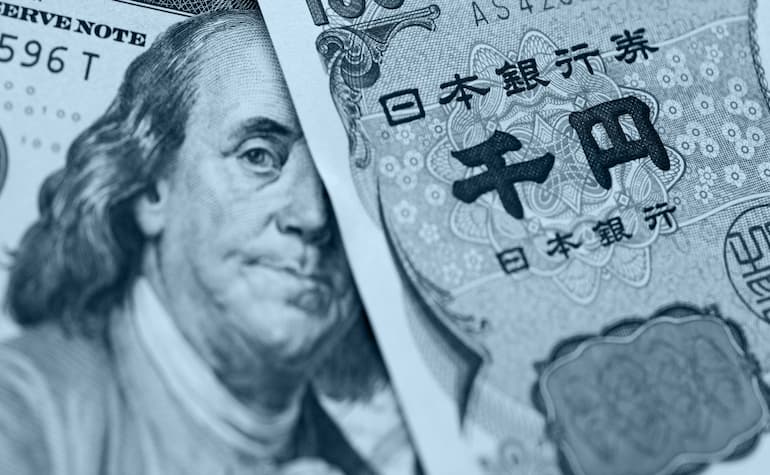

In 2022, it was believed that the Bank of Japan (BoJ) intervened three times, in September when the USDJPY was at 145.80, and in October and November when the USDJPY was at the 151.50 and 146.50 price levels respectively. For each of the 3 interventions, the USDJPY reversed strongly by more than 500pips. With the recent steady climb in the USDJPY in August, rising from 138 to the high of 146.50, there have been increasing comments from members of the BoJ and Japanese government regarding the need for an intervention.
The BoJ has avoided interventions, possible for the interim, by announcing increased flexibility on its yield-curve control (YCC). However, the markets viewed the action as insufficient and the stronger DXY continued to take the USDJPY higher. Continued upside on the USDJPY cannot be ruled out, especially if the DXY continues to strengthen significantly.
However, if the USDJPY continues to trade between the 145 and 146.50 price range, the possibility for an intervention from the BoJ increases. For an impactful intervention, the scale and timing of the decision would not be scheduled. A signal would be based on price volatility, in this case, if the USDJPY breaks through the bullish Ichimoku cloud and down from the 145-round number support level, which aligns with the 23.6% Fibonacci retracement level.
A reversal of 500 pips, similar to previous interventions, could see the USDJPY retest the trendline, along the 140 price level, with interim support at the 61.8% Fibonacci retracement and 141.60 price level.
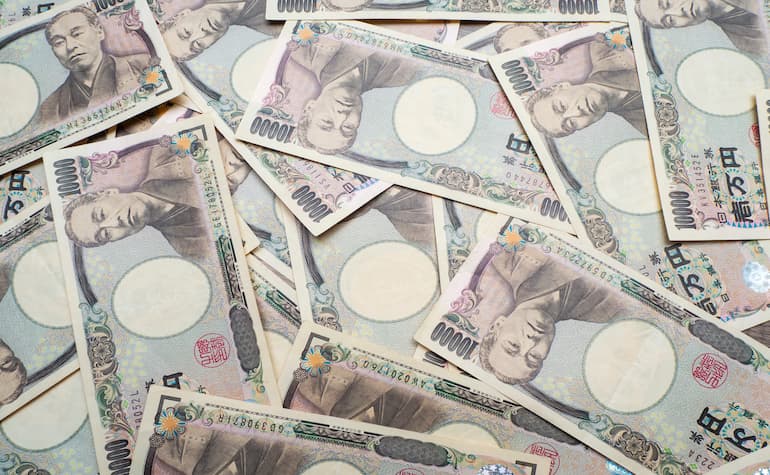

USDJPY briefly pushed above 145 in today’s session before a sharp pullback, with traders wary of recent jawboning from Japanese officials regarding the “one sided” trade in the Yen may be setting the Japanese MoF up for another round on FX intervention that we saw late in 2022. Some sharp moves in the Yen in the last day have had traders speculating the MoF may have already intervened on a small scale but there was no official confirmation of intervention, MoF officials said they have no comment on the matter, but “they are mindful of the one-sided moves”. Looking at a close up of last years price action in the USDJPY may give traders a clue as to what to expect, with minor interventions seeing USDJPY spike lower, only to rise again until a major intervention or surprise policy change sustains a move lower in the cross rate.
This is a fairly predictable scenario from my experience with JPY interventions over the years. Any USDJPY traders would be wise to be familiar with the price action from these previous intervention efforts.
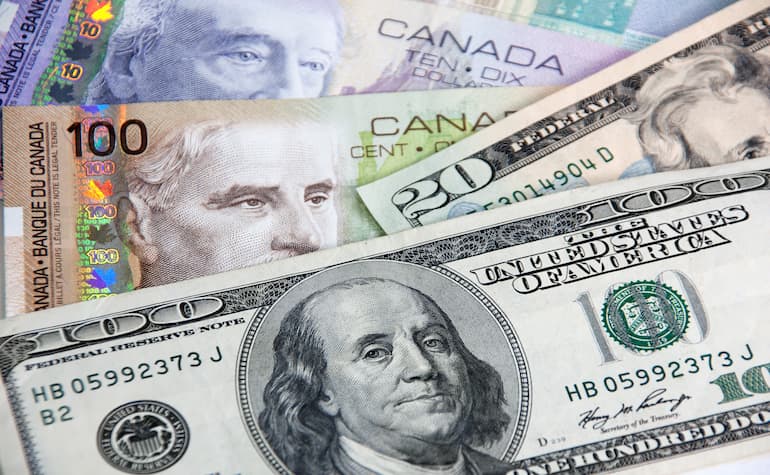

The USD/CAD pair experienced a relatively uneventful session after Bank of Canada (BoC) decided to keep interest rates on hold. However, what caught the attention of traders was the hawkish tone in the central bank's language. Similar to many central banks globally, the BoC is cautious about raising rates further until they thoroughly assess the inflation landscape.
Still, they've left the door open for potential rate hikes in the future. Surprisingly, this hawkish stance from the BoC didn't have a significant impact on the Canadian dollar against the US. The strength of the US dollar remained dominant, keeping the USD/CAD pair relatively flat during the session.
Currently, the pair finds itself at a crucial resistance level, which it has unsuccessfully attempted to breach three times since April. The BoC's hawkish language appears to have halted the pair's upward momentum, preventing a breakout, but wasn’t enough to push the pair south. Since mid-July, the USD/CAD pair has experienced an impressive 4% surge, driven by a resilient US dollar and the US Federal Reserve's commitment to maintaining higher interest rates to combat inflation.
However, from the technical view, a slightly bearish divergence is forming on the daily RSI, indicating the move might be running out of steam and a potential correction could be on the cards. In this high inflation environment, the pair's direction will likely hinge on crucial upcoming data releases in the weeks ahead. In addition to the technical setups, traders should keep a close watch on the fundamentals to help navigate potential shifts in direction.
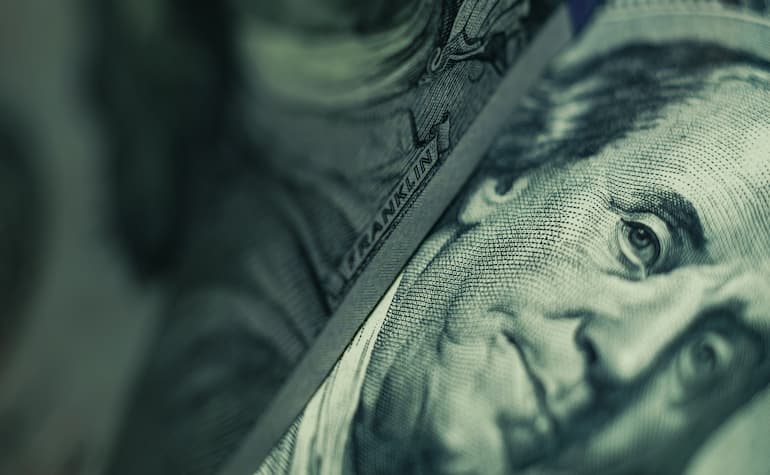

The US Dollar Index (DXY) has closed its fourth consecutive day in the red, reaching levels last seen in early May 2023. Despite the recent decline, the DXY is coming into support around the 100 level, which has proven to be a resilient bounce point multiple times. However, each bounce appears to be getting smaller, which might indicate growing downward pressure.
This support level adds an interesting dynamic to the market as traders watch for potential price reaction. Todays US CPI print may hold the key to determining the DXY's future trajectory. If the CPI data is reported higher than expected, it could potentially fuel speculation of tighter monetary policy by the Federal Reserve.
In such a scenario, we might see the DXY experiencing a short-term rebound, as higher interest rates tend to attract investors seeking stronger returns. On the other hand, if the CPI data comes in lower than expected, market participants might interpret it as a sign that the US Federal Reserve will maintain its current pause in interest rate hikes during their upcoming FOMC meetings. If that occurs, it could potentially exert downward pressure on the US Dollar.
A more accommodative monetary policy stance may reduce the attractiveness of the USD to investors seeking higher yields, leading to a potential decline in its value against other currencies and potentially sending the DXY below 100 for the first time since early 2022. US CPI will be released at 08:30 EDT, YoY is expected to come in at 3.1%, with MoM expected at 0.3%
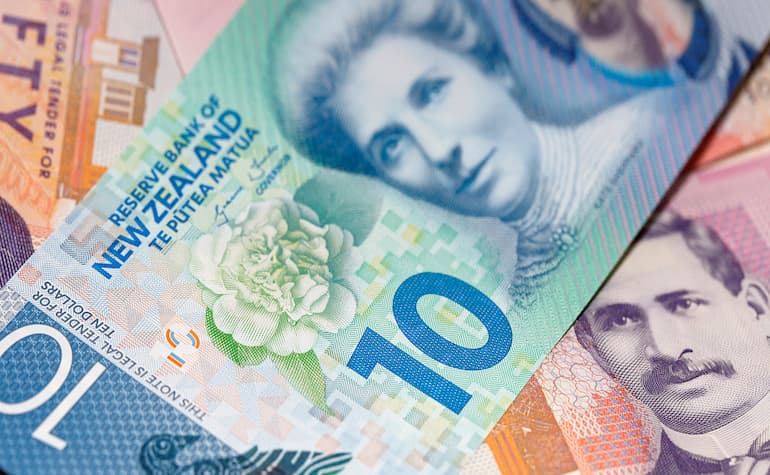

The current market consensus is that the Reserve Bank of New Zealand (RBNZ) would likely keep interest rates at 5.50% at the upcoming meeting on 12th July. This is supported by the RBNZ’s monetary statement indicating that “ monetary policy is having a sufficiently moderating effect on demand and inflation, and that we are yet to see the full effects of past tightening on the economy. A pause would also allow more time to assess the impact of the significant tightening, and the timing of any further increase that might be needed.” However, while the Consumer Price Index (CPI) has turned down from its peak of 7.3%, the most recent data was released at 6.7%, this is still significantly higher than the RBNZ’s target level of 1-3%.
Therefore, another rate hike from the RBNZ cannot be ruled out. In May, the RBNZ released its decision to hike rates to 5.50% but also indicated that the official cash rate has reached its peak at 5.50% but would need to remain at the restrictive level until at least the middle of 2024. This led to the NZDUSD falling steadily from 0.6250 to reach the round number support level of 0.60.
As the NZDUSD climbs toward the 0.6250 price area, formed by the previous swing high and the downward trendline, look for a potential reversal if the RBNZ holds interest rates at 5.50% as forecasted. A reversal to the downside could reach the price level of 0.61, supported by the upward trendline, and beyond that, the 0.60 round number key support level.

